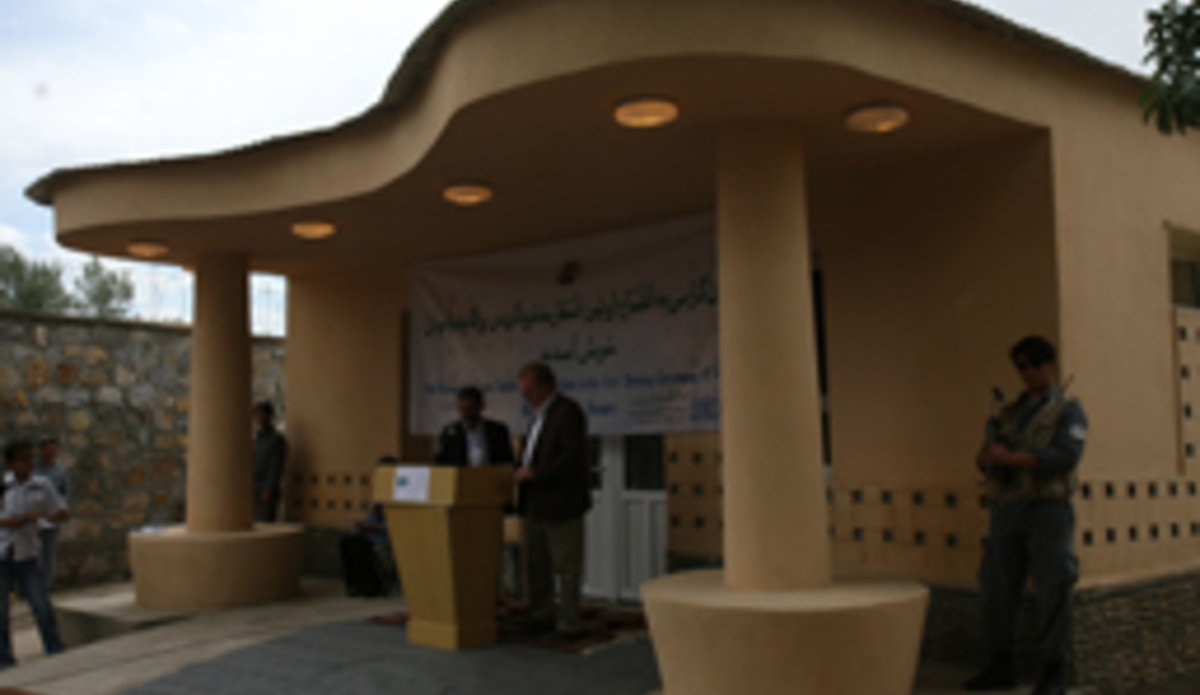New hope for pregnant women in Bamyan
14 July 2010 - Government representatives, UNICEF, religious leaders and women recently inaugurated a facility in Bamyan that aims to provide a safe place for women during the final stage of their pregnancy.
”This place is needed in Bamyan like water in a desert. In the past not enough care was taken of mothers. This will change now,” emphasized Dr Hamed Nazim, Head of Bamyan’s Provincial Hospital.
Afghanistan’s Maternity Waiting Home project was launched in 2007 in six provinces to bridge the gap between rural areas – with poor access to skilled care – and urban areas where health services are available.
“When a woman has complications we refer her to the hospital,” explains Zoubaida-jan, a trained birth attendant and Head of the Women’s Council in her village: Sayed Abad. “But it takes about two hours by donkey to reach the next health centre. At night and during winter, it is impossible.”
“This facility is true proof of our joint efforts,” said Haji Qasim, Deputy Governor of Bamyan. “Our communities bought the land, while UNICEF and the Ministry of Public Health provided funding for construction and supplies and the first year’s operating costs. Together we must make this endeavour a success for the mothers of Bamyan.”
According to Peter Crowley, UNICEF Representative in Afghanistan, every 30 minutes, an Afghan woman dies from pregnancy of childbirth-related causes. “Almost all of these deaths are preventable,” he added. With 20,000 maternal deaths each year Afghanistan is one of ten countries in the world with the highest risk of maternal death.
“Very few women give birth in a clinic or a hospital, that’s why this maternity waiting home is designed to be a place like home,” explained Dr Ihsanullah Shahir, Provincial Director of Health in Bamyan.
A Ministry of Public Health and UNICEF (2005) estimate suggests that, in Bamyan, 98 per cent of deliveries take place at home, with over 320 maternal deaths occurring each year, a figure that places Bamyan among the top ten worst provinces to give birth in.
“This maternity waiting home can only be effective if it is linked effectively with other efforts. By providing a continuum of home, community, outreach and facility-based care we can address every stage of maternal, newborn and child health,” emphasized Peter Crowley.
To promote the utilization of Bamyan’s Maternity Waiting Home, a series of awareness-raising sessions have been initiated in health facilities, schools and mosques. Partners include a network of NGOs involved in Basic Public Health Services (BPHS), the Integrated Maternal and Child Health and Nutrition (IMCHN) programme, the Women’s Affairs Network and the Ministry of Religious Affairs.
“Mullahs in this province fully support the project,” concluded Baba Mohseny, a representative of Bamyan’s religious leaders. “To save a mother means to save a family, which is equivalent to saving the whole world.”
By Cornelia Walther, UNICEF
 UN
UN







